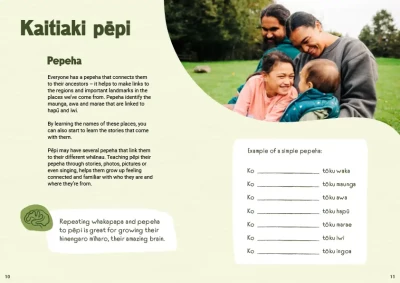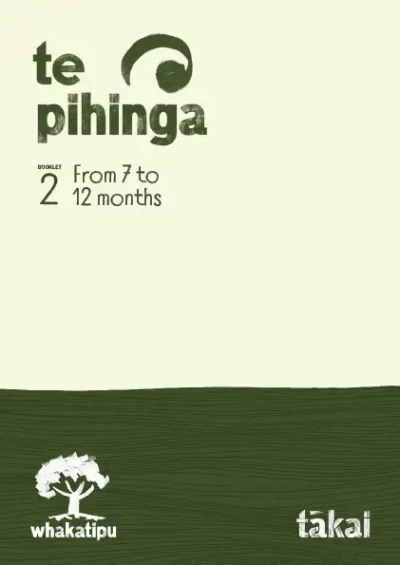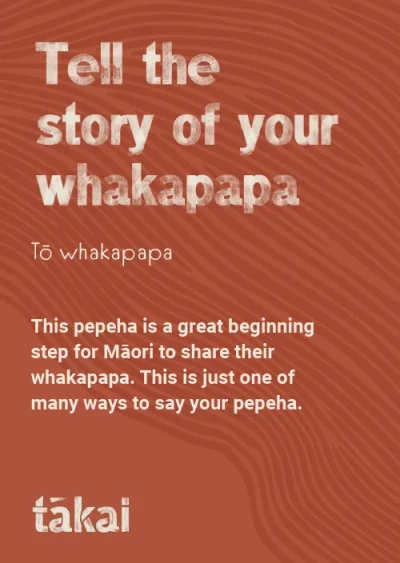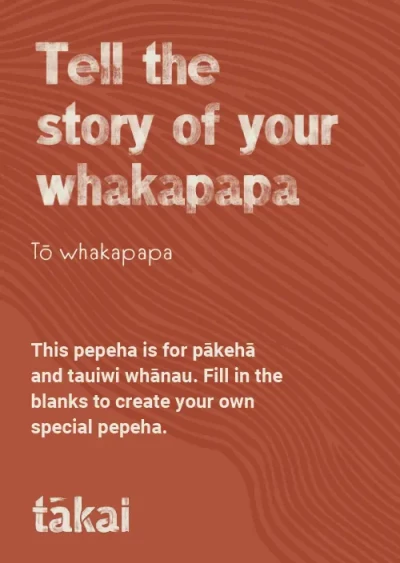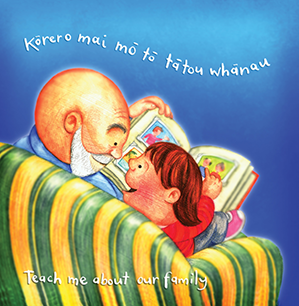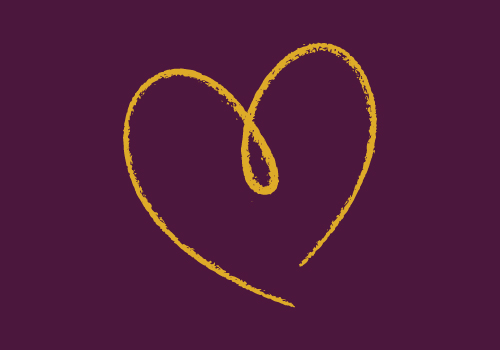
Pepeha
Pepeha is a way of introducing oneself. It will usually follow a set format and identifies who we are, where we're from and where we belong. Our pepeha connects us to each other and our whakapapa.
In te ao Māori, sharing your pepeha is how you introduce yourself – it identifies who you are, where you’re from and where you belong. Standing and sharing our pepeha is a common practice, especially at the start of a hui or gathering where we don’t all know each other. A pepeha is great way to make links and connect with others.
Everyone has a pepeha that links them to their ancestors. It’s like a story that connects you to your waka , your hapū and iwi . It identifies important places like your maunga , awa and marae. Tamariki and their whānau may have several pepeha that link them to their different whānau.
Teaching tamariki their pepeha through stories, photos, pictures or even waiata helps them grow up feeling connected and familiar with who they are and where their people are from.
Sharing pepeha is an important part of tikanga Māori but the idea of making ourselves known to others is universal. When people meet they tell each other who they are and where they’re from. It helps us to make links with one another.
Discovering who we are
Discovering who we are and where we’re from is an important part of building our sense of belonging. It can be very significant for those who, for whatever reason, have been distanced from their whānau or tūrangawaewae .
This topic may need to be broached with sensitivity, especially with whānau who don’t feel connected or have been removed from their roots.
It may take many months of searching and seeking for whānau to be able to fill in the gaps of their pepeha, but this is part of the process and part of the learning. The important thing is to be able to help link whānau with their iwi and their kin.
Hokia ki ō maunga kia pūrea koe e ngā hau a Tāwhirimātea.
Creating a pepeha
Here is one way to structure a simple pepeha.
Ko ____________ te māunga
Ko ____________ te awa/roto/moana
Ko ____________ te waka
Ko ____________ tōku iwi
Ko ____________ tōku hapū
Nō ____________ ahau
Ko ____________ tōku ingoa
Conversation ideas
Use the Whakatipu booklet Te Pihinga 2, pages 10 and 11, to start a conversation with whānau about whakapapa and whenua.
Helpful resources for whānau
-
Pepeha example<
Pepeha exampleWilliam Poutu explores the connection between pepeha and whakapapa and shares his pepeha as an example.
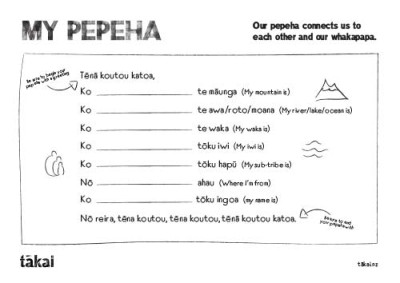 pdf 5 MB
pdf 5 MB
